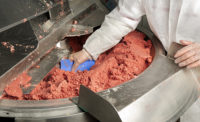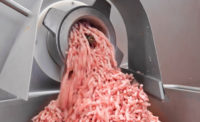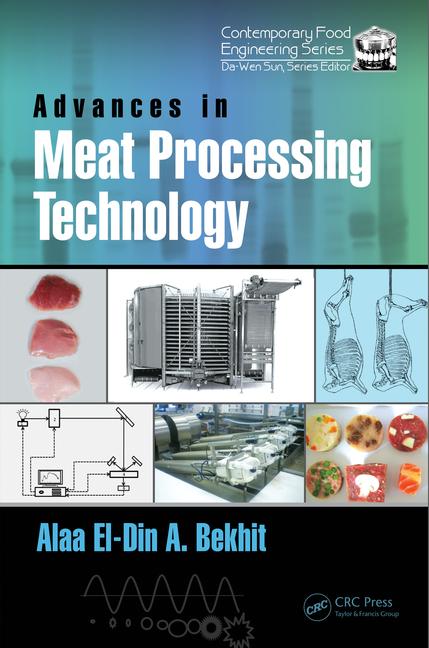Processing Tech
Design advances stuffing, grinding success

The grinding and stuffing process must handle variations in raw meat and poultry to achieve homogeneous and consistent quality products. For grinding, the challenges for processors have always been minimizing meat temperature rise and damage to both the lean and fat particles, as well as efficient bone and hard-particle elimination, says Lynn Knipe, extension processed meat specialist and associate professor in the College of Food, Agricultural and Environmental Sciences at Ohio State University, in Columbus. Grinding uniformity and handling varying biological sources of raw materials, such as the natural variation in fat content and quality and moisture content, along with temperature, remain current challenges, says Jeff Sindelar, extension meat specialist and associate professor in the Department of Animal Sciences at the University of Wisconsin, in Madison.
For stuffing, challenges continue to be minimizing fat smearing on the surface of links and obtaining accurate portions, while processors are achieving higher volume output, Knipe says. Sindelar says minimizing smear and not overworking the batter are focuses of processors across the board. Challenges of portion control and not including more air in the product can be mitigated by a good vacuum system, he explains.
New equipment has been developed for specific product types and quality characteristics, though. Developments of in-line grinders and stuffers, improved bone elimination systems, balanced auger flow systems and knife and grinder plate designs have greatly helped to overcome these challenges with particle definition and hard-particle elimination, Knipe says.
“Most new stuffers are being designed and built for easier cleaning and sanitizing, along with dual vacuum systems and in-line grinders on some stuffers, and these updates should all improve product shelf life, color and yield,” Knipe says. “In-line grinders and dual vacuum systems on stuffers introduce minimize incorporation of air into ground meat and heats the product less, which should improve the shelf life and color.”
For processors expanding operations, or looking to replace tired equipment, the biggest challenge Knipe sees is learning about and selecting the right combination of equipment.
Sindelar also says it is important for processors to understand what impact the equipment will have on the raw material then design systems around product specifications.
Additionally, maintaining equipment and making sure equipment is operating under optimal conditions are imperative. Processors also must take advantage of things they can control, Sindelar says. For example, use product temperature technology available for grinders and institute a progressive preventative maintenance program for knife plate sharpening.
Making sure processors are using the best grinding and stuffing equipment to start with is key, Sindelar adds, because any upkeep and preventive maintenance on equipment that is old and worn out places processors in a bad position.
Upkeep of grinding and stuffing systems is paramount, Knipe agrees. “Knife and plate sharpness are very important to the grinding process, to ensure clean cutting of lean meat and fat particles,” he says. “Proper maintenance and upkeep are also important to prevent metal contamination to ground meat.”
“Equipment today is very technologically advanced and designed to operate within very tight parameters,” Sindelar says. “Preventative maintenance and upkeep becomes super critical because that narrow window of performance doesn’t necessarily take a whole lot to get out of. Therefore, the maintenance must be really spot on and implemented to make sure that those machines are operating at their very highest performance.”
Grinding and stuffing equipment manufacturers recognize many of the typical challenges processors have, so they are trying to use their engineering expertise to design better equipment, Sindelar adds. For example, the use of high-vacuum systems for whole-muscle products has taken the technology of a whole-muscle hand manufacturing to the next level by providing a viable and cost effective way of reducing air and minimizing air voids and pin holes. Another example would be in-line grinding systems with vacuum fillers or stuffing equipment that has the identified challenge of overworking raw material. This provides a means of addressing this challenge by putting a grinder at the very end, before the product goes into a casing.
Moving forward with the advances in design that have been occurring with grinders and stuffers in recent years, Knipe expects more of the same to be coming in the future. NP
Looking for a reprint of this article?
From high-res PDFs to custom plaques, order your copy today!









